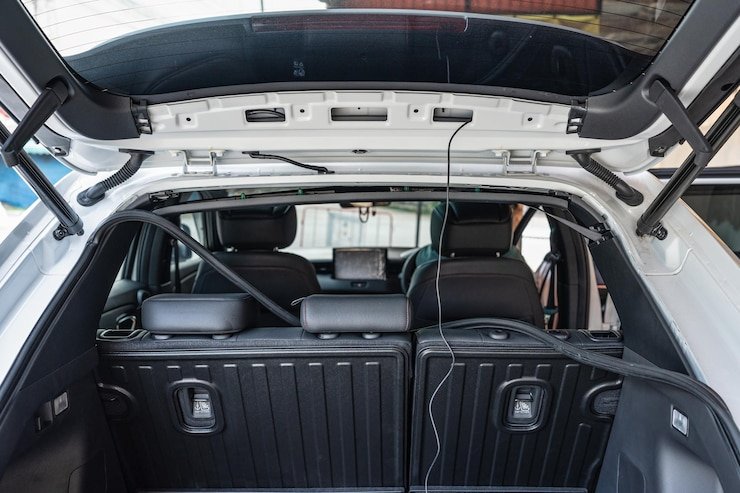Introduction to the 2008 Toyota Prius Touring JBL Audio System
The 2008 Toyota Prius Touring is not just a marvel of hybrid technology; it’s also known for its impressive JBL audio system. Designed to deliver crisp and clear sound quality, this system has become a favorite among car enthusiasts and Toyota owners alike. Whether you’re cruising down the highway or stuck in city traffic, the JBL system provides an audio experience that enhances every drive. This blog post will guide you through understanding the wiring harness, common issues, and how to address them to keep your audio experience top-notch.
Understanding the JBL Wiring Harness System
The heart of the JBL audio system in the 2008 Prius Touring lies in its sophisticated wiring harness. This complex network connects the amplifier, speakers, and various audio components, ensuring seamless sound quality. The harness includes multiple connectors and wires that transmit audio signals, power, and control data between components. Understanding the layout and function of each part is crucial for anyone looking to troubleshoot or modify their setup.
The amplifier, often located under the passenger seat, boosts audio signals to all the speakers. It’s connected via the harness to a set of premium speakers strategically placed throughout the cabin. This setup allows for a rich and immersive sound that remains consistent across different music genres. The wiring itself is color-coded for easy identification, aiding in any necessary repairs or upgrades.
Knowing the ins and outs of your JBL wiring harness can make a significant difference in diagnosing audio issues or planning enhancements. Familiarity with the setup means you can make informed decisions, whether you’re replacing a faulty wire or upgrading to a system with even greater capabilities.
Common Issues with the JBL Wiring Harness in the 2008 Prius Touring Model
Even the best audio systems can encounter problems, and the JBL setup in the 2008 Prius Touring is no exception. Over time, wires can become worn or damaged, leading to issues like static, poor sound quality, or complete audio failure. One common issue is loose or corroded connectors, which can disrupt the flow of audio signals.
Another problem is the gradual deterioration of speaker wires. Exposure to heat and vibration over years of use can cause the insulation to crack, leading to short circuits. Additionally, the amplifier may sometimes overheat, especially in older models, impacting performance.
Recognizing these issues early can prevent more costly repairs down the line. Regularly checking the integrity of your wiring harness and addressing signs of wear can keep your JBL system running smoothly. Knowing what to look for can save you time, money, and frustration.
DIY Solutions for Repairing or Upgrading the JBL Wiring Harness

For those who enjoy a hands-on approach to car maintenance, repairing or upgrading the JBL wiring harness can be a rewarding project. Start by gathering necessary tools such as wire cutters, electrical tape, and a multimeter. Ensure your vehicle is turned off and the keys are removed from the ignition before beginning any work.
Identify and isolate the problem area by using the multimeter to test for continuity in each wire. Replace any damaged wires with ones of similar gauge and quality, ensuring secure connections to avoid future issues. For those interested in upgrading, consider high-quality aftermarket components that are compatible with the existing JBL system.
Step-by-step guides are available online, detailing everything from removing the door panels to accessing the amplifier. These resources are invaluable for DIY enthusiasts, providing clear instructions and tips to ensure a successful repair or upgrade.
Tips for Maintaining the JBL Wiring Harness System
Maintaining your JBL wiring harness is crucial for long-term audio quality. Regular inspections can help catch potential issues before they become serious problems. Check connectors for signs of corrosion and clean them with contact cleaner if necessary. Ensure that wires are securely connected and free from damage.
Avoid adding unnecessary strain to the harness by keeping wires organized and properly routed. Using zip ties or clips can prevent wires from moving during vehicle operation, reducing the risk of wear. Additionally, consider using protective sheathing for exposed wires to shield them from environmental factors.
By implementing these maintenance tips, you can extend the lifespan of your JBL system while preserving the quality of your listening experience. Regular care not only prevents problems but also ensures that your drives are accompanied by the best sound possible.
Conclusion and Resources
In conclusion, the 2008 Toyota Prius Touring’s JBL audio system is a standout feature that requires understanding and care to maintain. From diagnosing issues with the wiring harness to performing DIY repairs and upgrades, there are many ways to ensure your audio system remains in peak condition.

